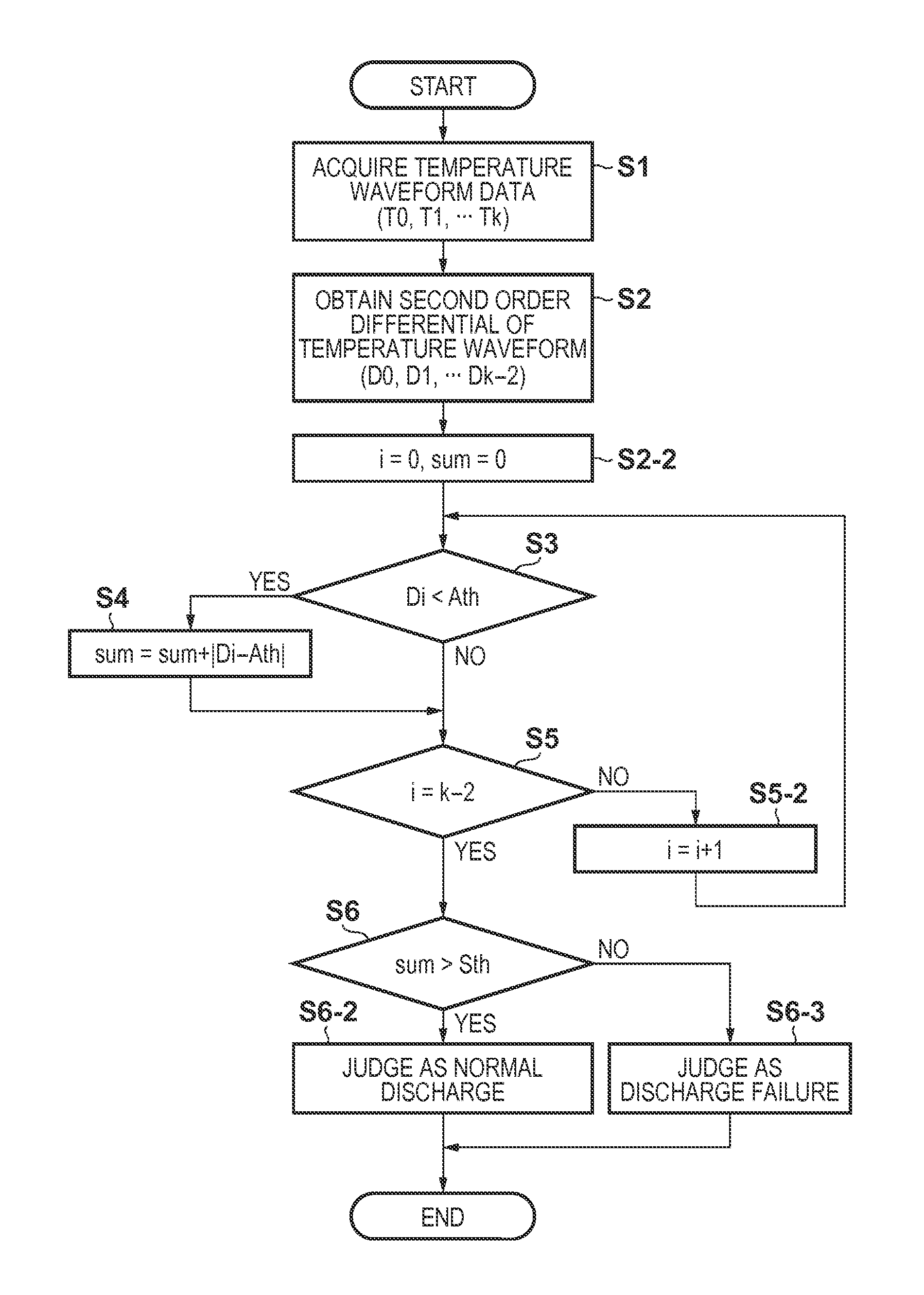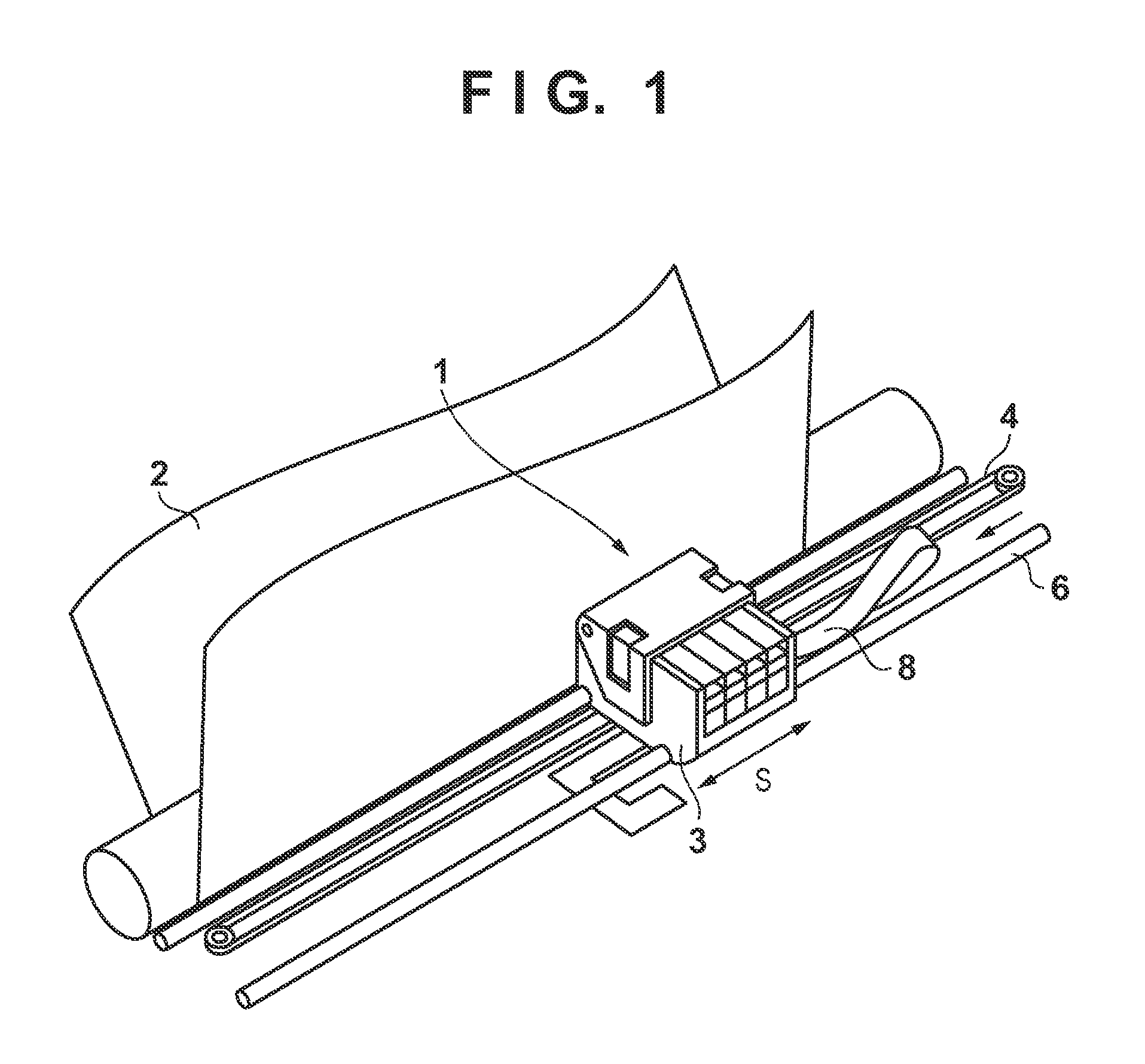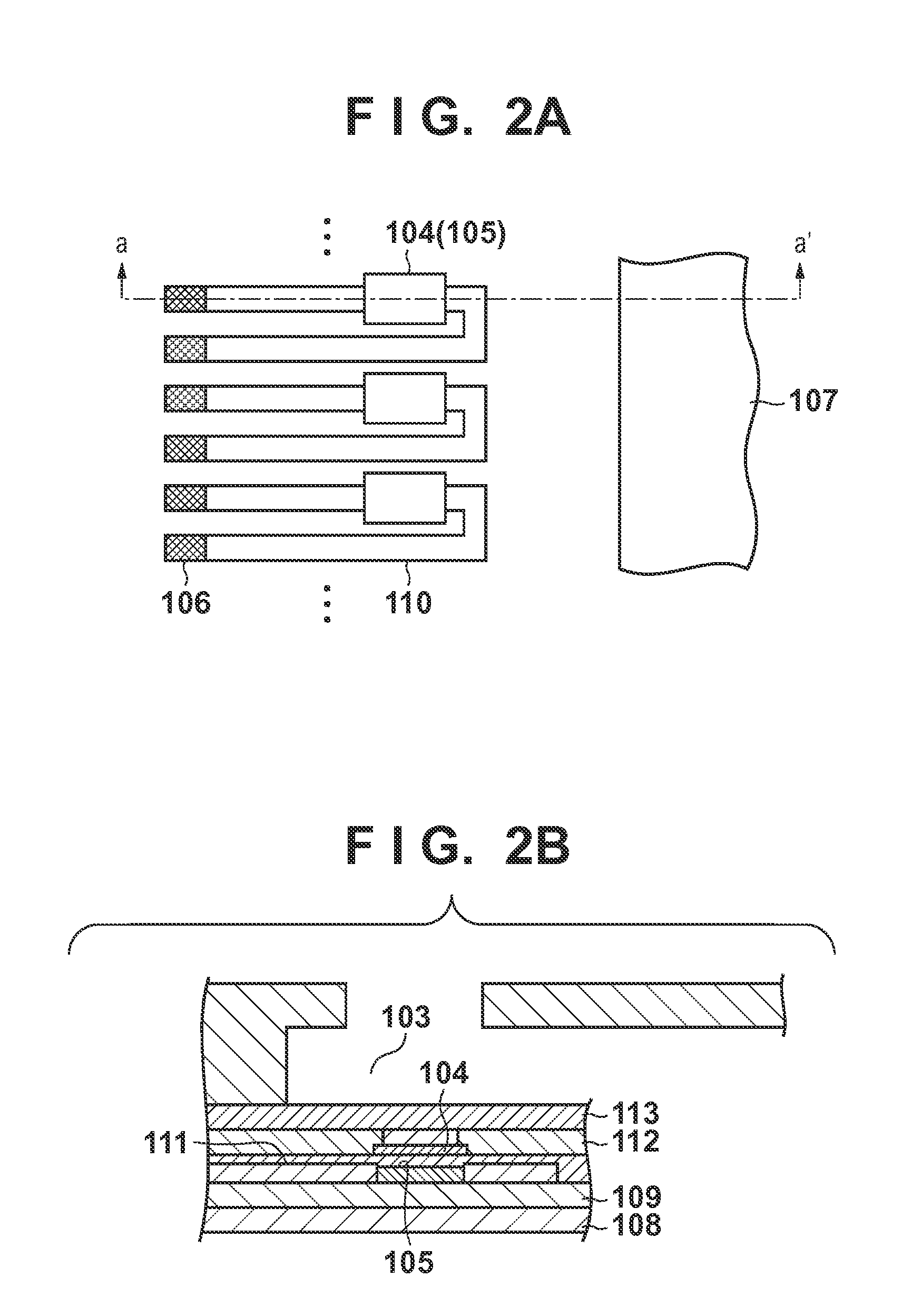Printing apparatus
a printing apparatus and printing technology, applied in printing, other printing apparatus, etc., can solve the problems of difficult rapid judgment of the discharge state, large printing apparatus, and inability to quickly judge the discharge sta
- Summary
- Abstract
- Description
- Claims
- Application Information
AI Technical Summary
Benefits of technology
Problems solved by technology
Method used
Image
Examples
first embodiment
[0073][First Embodiment]
[0074]FIG. 7 is a graph showing the relationship between an addition threshold and the second derivatives (d2T / dt2) of the temperature detected by a temperature sensor 105 in respect with a time at the time of normal discharge and at the time of a discharge failure occurrence according to the first method. In FIG. 7, T is a temperature, and t is a time.
[0075]In the normal discharge, the negative peak that appears in the second derivative has a smaller value, and the positive peak has a larger value than in the second derivative at the time of the discharge failure. Hence, if the second derivative is added without using the addition threshold, the negative peak and the positive peak cancel each other, and the difference from that at the time of the discharge failure is not so large. In addition, the waveform of the temperature detected by the temperature sensor 105 has a variation caused by the difference in the head or nozzle. In this method, the addition thr...
second embodiment
[0108][Second Embodiment]
[0109]FIG. 13 is a graph showing an intermediate time threshold ITth. In this embodiment, when an extraction intermediate time IT at which the cumulative value exceeds a predetermined intermediate cumulative threshold is smaller than a predetermined intermediate time threshold, the discharge state is judged as normal discharge. If the extraction intermediate time IT is larger, the discharge state is judged as discharge failure.
[0110]FIG. 14 is a flowchart showing a discharge state judgment procedure according to the second embodiment.
[0111]As can be seen by comparing FIG. 14 with FIG. 12, the procedure of this embodiment is different from that shown in FIG. 12 in how to provide the threshold for the cumulative value. That is, in FIG. 12 according to the first embodiment, the intermediate cumulative value isum at the intermediate detection time IDT is used as the judgment criterion in step S5-2. In FIG. 14 according to this embodiment, however, the comparison...
third embodiment
[0116][Third Embodiment]
[0117]FIG. 15 is a graph showing a first intermediate cumulative value isum1 and a second intermediate cumulative value isum2. In this embodiment, two predetermined intermediate cumulative values are prepared, and the difference between times at which the cumulative value exceeds the intermediate cumulative values is defined as an amplification time AT. The amplification time is compared with a predetermined amplification time threshold ATth. Unless AT1 at time t=F1, and exceeds the second intermediate cumulative value isum2 at time t=F2. Hence, in this case, the amplification time AT is AT=F2−F1. In normal discharge, when the cumulative value (dT / dt) is lower than a normal cumulative value, the cumulative value exceeds the first intermediate cumulative value isum1 at time t=S1, and exceeds the second intermediate cumulative value isum2 at time t=S2. Hence, in this case, the amplification time is AT=S2-S1.
[0118]FIG. 16 is a flowchart showing a discharge state...
PUM
 Login to View More
Login to View More Abstract
Description
Claims
Application Information
 Login to View More
Login to View More - R&D
- Intellectual Property
- Life Sciences
- Materials
- Tech Scout
- Unparalleled Data Quality
- Higher Quality Content
- 60% Fewer Hallucinations
Browse by: Latest US Patents, China's latest patents, Technical Efficacy Thesaurus, Application Domain, Technology Topic, Popular Technical Reports.
© 2025 PatSnap. All rights reserved.Legal|Privacy policy|Modern Slavery Act Transparency Statement|Sitemap|About US| Contact US: help@patsnap.com



